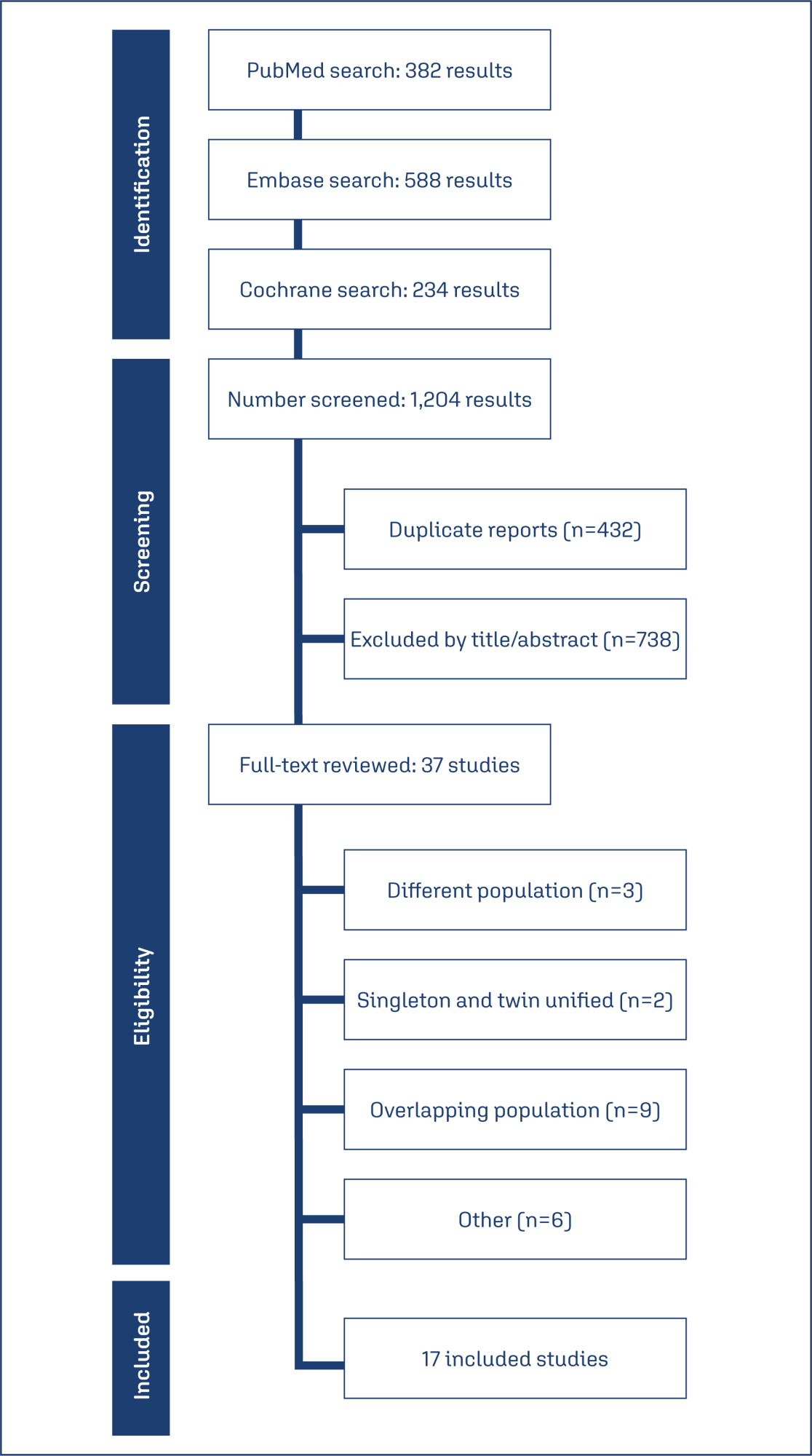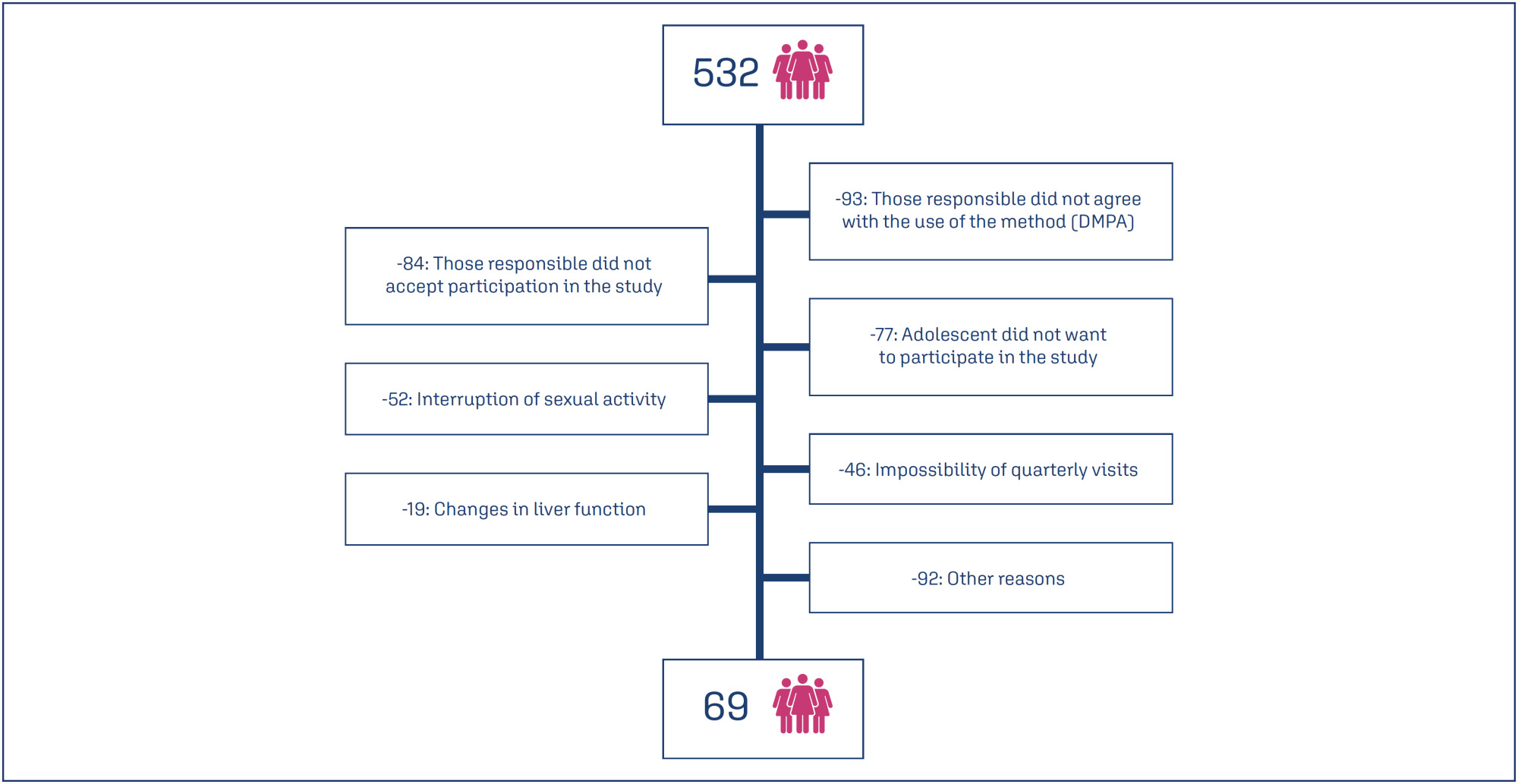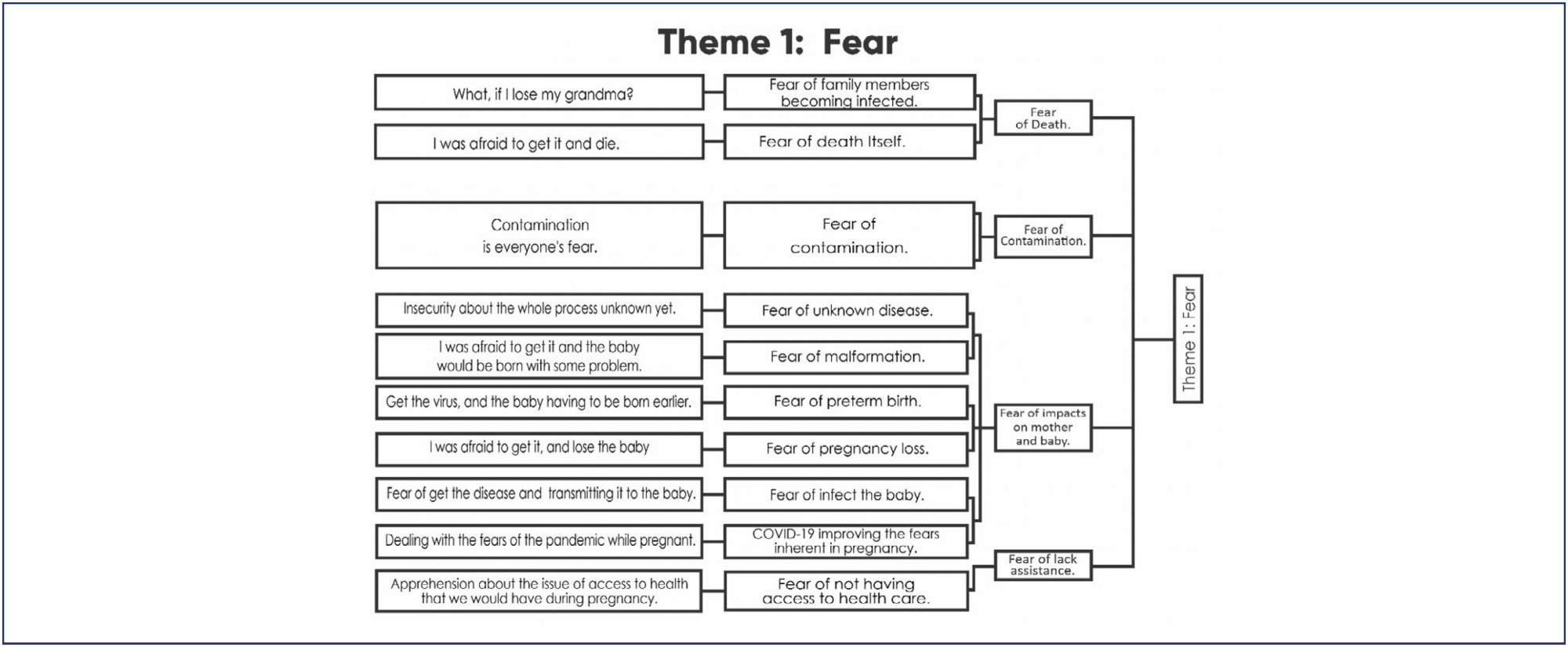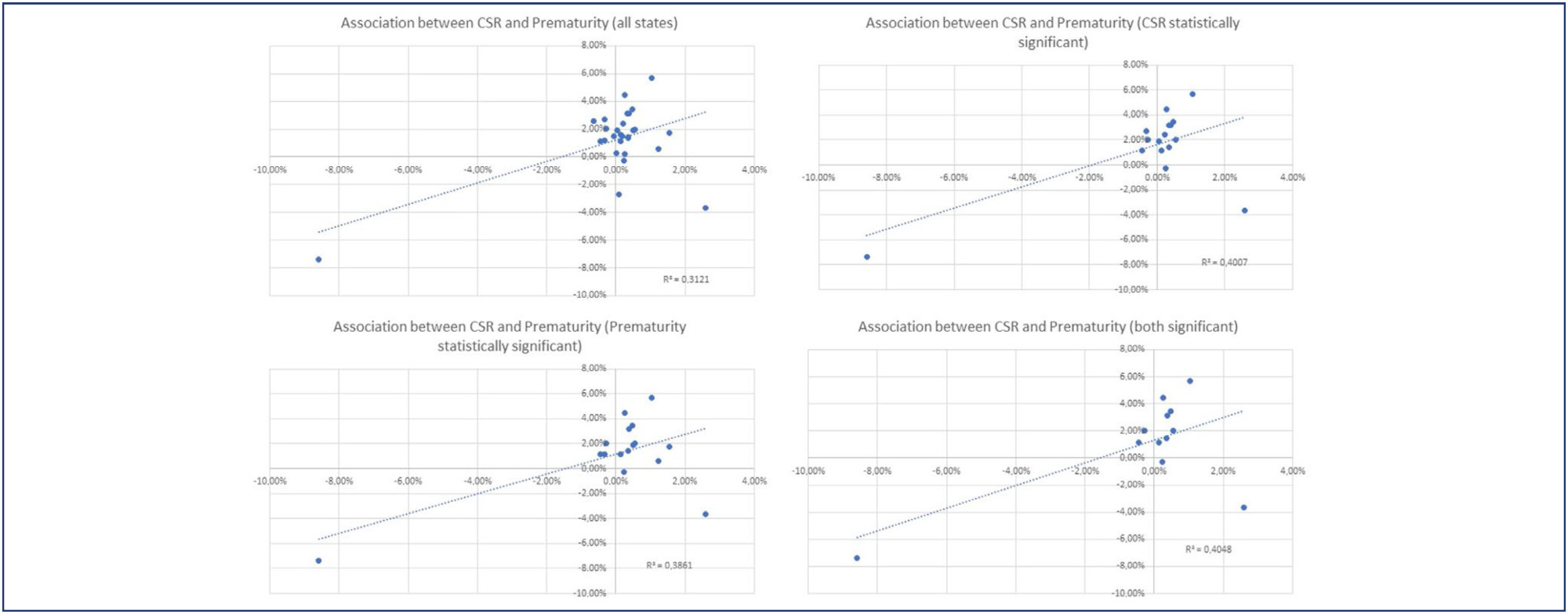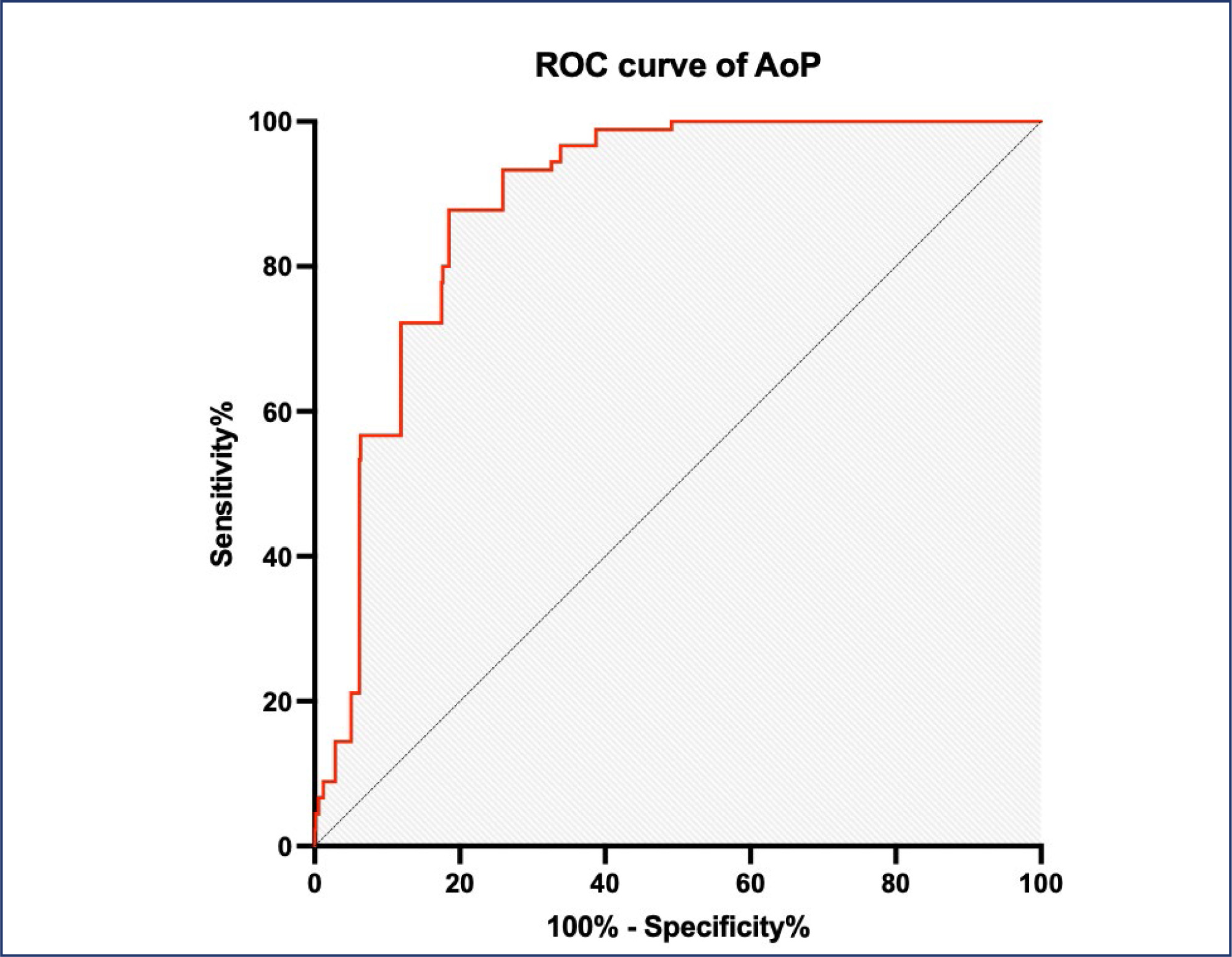-
Original Article06-19-2002
Computerized Antepartum Cardiotocography Analysis in High Risk Pregnancies
Revista Brasileira de Ginecologia e Obstetrícia. 2002;24(1):29-36
Abstract
Original ArticleComputerized Antepartum Cardiotocography Analysis in High Risk Pregnancies
Revista Brasileira de Ginecologia e Obstetrícia. 2002;24(1):29-36
DOI 10.1590/S0100-72032002000100005
Views112See morePurpose: to study computerized cardiotocography performed in high-risk pregnancies, analyze the results, and correlate the criteria to perinatal results. Patients and Methods: two hundred and thirty-three high-risk pregnancies were studied prospectively, performing a total of 485 computerized cardiotocographies. The exclusion criteria included fetal anomalies and signal loss over 20% (proportion of 3.75-millisecond periods in which there were no valid pulse intervals). The perinatal results of 71 pregnancies were correlated to the last cardiotocography, performed at least seven days before birth, excluding patients with absent or reversed end diastolic velocities in the umbilical arteries. Results: thirty-three examinations with signal loss over 20% were excluded. The normal criteria were met in 404 (83.3%), and 62.1% examinations met the criteria within 20 minutes and 79% within 30 minutes. The abnormal computerized cardiotocography was related significantly (p<0.05) to adverse perinatal results, such as: preterm delivery, first minute Apgar score less than 7 (33%), neonatal intensive care admission (55.5%) and intubation of newborn at delivery (44.4%). Conclusions: computerized cardiotocography in high-risk pregnancies met the normal criteria in most of the cases, with the examination performed for 30 minutes. The cases that did not meet the criteria correlated significantly to adverse perinatal results.
-
Original Article06-19-2002
Predictive Model using Risk Factors for Cesarean Section
Revista Brasileira de Ginecologia e Obstetrícia. 2002;24(1):21-28
Abstract
Original ArticlePredictive Model using Risk Factors for Cesarean Section
Revista Brasileira de Ginecologia e Obstetrícia. 2002;24(1):21-28
DOI 10.1590/S0100-72032002000100004
Views128See morePurpose: to investigate antepartum factors related to cesarean section and develop a cesarean section predictive model. Methods: the study design was a retrospective cohort which included all the cared 843 deliveries in a third level unit from June 1993 through November 1994. Children with 1,000 g birthweight and above were included. The dependent variable was cesarean section (c-section). Independent variables were antepartum factors related to c-section. Logistic regression was used to develop a predictive model. Results: our model showed risk of c-section according to the following variables: maternal age under 20 years (OR = 0.396) and over 28 years (OR = 2.133); previous vaginal deliveries (OR = 0.626); previous c-section (OR = 4.576); prenatal care (OR = 2.346); breech presentation (OR = 4.174); twin pregnancies (OR = 14.065); late obstetrical hemorrhage (OR = 28.189); mild preeclampsia (OR = 2.180); severe preeclampsia OR=16.738; chronic hypertension OR=4.927 and other clinical problems (OR = 2.012). The predictive model had a concordance of 82.3% between probabilities and responses. Conclusions: our study identified 12 antepartum factors related to c-section. It was possible to develop a cesarean section predictive model taking into account all previously identified antepartum risk factors.
-
Original Article06-19-2002
Maternal Morbidity and Perinatal Morbidity and Mortality Associated with Ascendant Infection in Premature Rupture of Membranes
Revista Brasileira de Ginecologia e Obstetrícia. 2002;24(1):15-20
Abstract
Original ArticleMaternal Morbidity and Perinatal Morbidity and Mortality Associated with Ascendant Infection in Premature Rupture of Membranes
Revista Brasileira de Ginecologia e Obstetrícia. 2002;24(1):15-20
DOI 10.1590/S0100-72032002000100003
Views71See morePurpose: to evaluate the effects of ascending infection on the mother and newborn in the cases of premature rupture of membranes. Methods: this was a prospective study, carried out to evaluate 50 pregnant women with premature rupture of membranes (PROM) and their newborns. The clinical chorioamnionitis was investigated by clinical findings (thermal curve, abdominal pain by groping and/or uterine softening, smell and other characteristics of vaginal secretion) and subsidiary tests (white blood cell count and C-reactive protein). The histologic chorioamnionitis was investigated by macroscopic and microscopic study (placenta, membranes and cord). In the microscopic study optic microscopy with hematoxylin-eosin staining was used. The newborns were evaluated as to weight and Apgar score in the first and fifth minutes of life. White blood cell count, culture of auditory canal swab and aspirated gastric material culture complemented the study. Statistical analysis was performed using the Fisher exact test and the Student t-test, with level of significance set at 5% (p < 0.05). Results: The rate of clinical chorioamnionitis was 29.4% (15/50), while for histologic chorioamnionitis it was 40% (20/50). All the cases of clinical chorioamnionitis had latency times (LT) higher than 24 hours. The newborns presented signal of infection in 31.4% of the cases (16/51), all with LT higher than 24 hours. The main isolated microorganisms of auditive duct and gastric aspirate of newborns were Klebsiella pneumoniae, Staphylococcus aureus, Gram positive coccus and group B Streptococcus. The infected newborns presented lower Apgar scores in the first and fifth minute of life, lower weight and higher perinatal morbidity and mortality when compared with newborns without infection. Conclusions: based on the analysis of results obtained in the present study, it was possible to conclude that the prolonged latency times increase the possibility of ascending infection, leading to higher possibility of premature delivery and high maternal morbidity (clinical chorioamnionitis), as well as perinatal morbidity and mortality.
-
Original Article06-19-2002
Maternal Serum Level of C-reactive Protein in Gestations Complicated by Preeclampsia
Revista Brasileira de Ginecologia e Obstetrícia. 2002;24(1):09-13
Abstract
Original ArticleMaternal Serum Level of C-reactive Protein in Gestations Complicated by Preeclampsia
Revista Brasileira de Ginecologia e Obstetrícia. 2002;24(1):09-13
DOI 10.1590/S0100-72032002000100002
Views73See morePurpose: to investigate the association between serum C-reactive protein concentration and preeclampsia occurrence, as well as its relation to the disease severity. Patients and Methods: twenty-seven preeclamptic pregnant women and 27 pregnant women with no clinical intercurrences, in the third trimester of pregnancy, were evaluated in a transversal case-control study. Serum C-reactive protein dosage, besides clinical examination and laboratory tests for the diagnosis of the disease, were performed in the antenatal period. The association between C-reactive protein and the presence of preeclampsia, and the correlation between plasma protein values and blood pressure values were investigated. The chi² significance test and regression analysis through the square minimum technique were used, and the results were considered to be statistically significant when p<0.05. Results: the preeclamptic pregnant women presented mean blood pressure levels higher than their controls (129.9±12.1 and 87.2±6.5 mmHg, respectively) and significantly higher C-reactive protein mean values than the normotensive women (18.9±4.9 and 1.56±0.8 mg/L, respectively). There was a significant association between the C-reactive protein concentration increase and preeclampsia occurrence (p<0.0001, odds ratio: 20.1). It was also observed that the mean arterial pressure and proteinuria presented a direct correlation with the circulating C-reactive protein in maternal blood (p=0.001 and p<0.001, respectively). Conclusion: C-reactive protein is an effective marker of preeclampsia occurrence and significantly correlates with the disease severity. The use of this test for the differential diagnosis of pregnant women in several hypertensive situations and its utilization as a marker of preeclampsia prognosis deserve further studies.
-
Original Article06-18-2002
Correlation Between Laparoscopic Aspects and Histologic Findings in Peritoneal Endometriotic Lesions
Revista Brasileira de Ginecologia e Obstetrícia. 2002;24(2):93-99
Abstract
Original ArticleCorrelation Between Laparoscopic Aspects and Histologic Findings in Peritoneal Endometriotic Lesions
Revista Brasileira de Ginecologia e Obstetrícia. 2002;24(2):93-99
DOI 10.1590/S0100-72032002000200004
Views95See morePurpose: to evaluate the correlation between the laparoscopic aspects and the stromal histologic findings of peritoneal endometriosis in order to understand the evolutive theory of endometriosis. Methods: sixty-seven women were submitted to laparoscopy for pelvic pain, infertility, ovarian tumor and other pathologies. A peritoneal biopsy was taken from the typical (puckered black) and atypical endometriotic implants. The different aspects of endometriosis were classified as follows: red lesions (Group V), black lesions (Group N) and white lesions (Group B). The histological sections were examined according to a standardized protocol. The histologic parameters used were: depth of the lesion, presence of hemosiderin, vascularization of the stroma and fibrotic tissue in stroma. Results: regarding lesion depth, there were significant differences between the groups. Red lesions were located consistently on the surface of the peritoneum (100%) and black lesions were superficial in 55.6%, intermediate in 38.9% and deep in 5.5%. White lesions were superficial in 28%, intermediate in 68% and deep in 4%. The presence of hemosiderin showed equivalent results in the 3 groups. The large stromal vascularization was present in the red lesions (60%), which a statistically significant difference compared to the other groups. Fibrotic tissue was present in 70.6% of the white lesions (group B), a fact that was significantly different when compared to groups V and N. Conclusion: the parameters analyzed in this study confirmed the importance of the evolutive theory of endometriosis.
-
Original Article06-18-2002
Role of Clinical History and Physical Examination in the Diagnosis of Urinary Incontinence
Revista Brasileira de Ginecologia e Obstetrícia. 2002;24(2):87-91
Abstract
Original ArticleRole of Clinical History and Physical Examination in the Diagnosis of Urinary Incontinence
Revista Brasileira de Ginecologia e Obstetrícia. 2002;24(2):87-91
DOI 10.1590/S0100-72032002000200003
Views71See morePurpose: to analyze the prevalence of urogynecological symptoms and their relationship with final urodynamic diagnosis, and to compare the clinical sign of stress urinary incontinence with urodynamic diagnosis. Methods: a total of 114 patients were included in a retrospective study from June 2000 to January 2001. All patients were evaluated through medical interview, physical examination and urodynamic study. They were classified according to clinical symptom, presence of clinical sign of urine loss and urodynamic study. The data analysis was performed using a test to determine sensitivity, specificity, and positive and negative predictive values. Results: the mean age was 51 years (19-80), 61 patients (53.5%) were in menacme and 53 (46.5%) in postmenopausal stage. Ten (18.8%) were using hormone replacement therapy and 25 (21.9%) had been submitted to surgery for incontinence. The isolated clinical symptom of urine loss was reported in 41 (36.0%) patients, the isolated urgency/urgency-incontinence in 13 (11.4%) and mixed symptoms in 60 (52.6%). In the urodynamic study, of all patients with symptom of isolated urine loss, 34 (83%) had stress urinary incontinence (SUI), no patient had detrusor instability (DI), 2 (4.9%) had mixed incontinence (MI) and 5 (12.1%) had a normal result. Of all patients with isolated urgency/urgency-incontinence, in the urodynamic study, none had SUI, 5 (38.5%) had ID, 1 (7.7%) had MI and 7 (53.8%) had a normal result. Of the patients with mixed symptoms, we identified, on the urodynamic evaluation, 25 (41.6%) who had SUI, 10 (16.7%) ID, 10 (16.7%) MI and 15 (25.0%) a normal result. The clinical sign of urine loss was identified in 50 (43.9%) patients. A total of 35 (70%) had SUI on urodynamic study, 6 (12%) had SUI and another diagnosis and 9 (18%) did not have SUI. Urine loss was absent in 64 (56.1%) women. Of those 23 (35.9%) had SUI on urodynamic study, 7 (11%) had SUI and another diagnosis and 34 (53.1%) did not have SUI. Conclusions: clinical history and physical examination are important in the management of urinary incontinence, although they should not be used as the only diagnostic method. Objective tests are available and should be used together with clinical data.
-
Original Article06-18-2002
Sentinel Lymph Node Accuracy in Early Breast Cancer Treated with Neoadjuvant Chemotherapy
Revista Brasileira de Ginecologia e Obstetrícia. 2002;24(2):81-86
Abstract
Original ArticleSentinel Lymph Node Accuracy in Early Breast Cancer Treated with Neoadjuvant Chemotherapy
Revista Brasileira de Ginecologia e Obstetrícia. 2002;24(2):81-86
DOI 10.1590/S0100-72032002000200002
Views123See morePurpose: to evaluate the predictive capacity of the sentinel lymph node (SLN) in relation to the axillary lymph node status in patients with initial invasive breast carcinoma submitted or not to neoadjuvant chemotherapy. Method: a prospective study was performed in 112 patients divided into two groups. The first group comprised 70 patients who had not received previous chemotherapy (Group I) and the second consisted of 42 patients who were submitted to neoadjuvant chemotherapy in three cycles of AC (adriamycin + cyclophosphamide) (Group II). Regarding chemotherapy, we observed partial response >50% in 21 patients, being complete in three of them, and <50% in 19 patients; in two patients progression of the disease occurred. A peritumoral injection of 99mTc dextran was applied with the help of stereotaxy in 29 patients with nonpalpable tumors, 16 of Group I and 13 of Group II. The radioactive accumulation shown by scintigraphy guided the biopsy of the axillary SLN with the help of a probe. The anatomopathologic study of SLN was based initially on a single section. When the LSN was free, it was submitted to serial sections at 50 mum intervals, stained with HE. Results: SLN was identified in 108 patients. No identification has been obtained in four patients, all with nonpalpable lesions (3 patients of Group I and 1 of Group II). The method's accuracy in predicting the axillary lymph node status was 100% in patients who did not receive neoadjuvant chemotherapy and 93% in those to whom this kind of treatment was administered. This difference proved to be statistically significant. Conclusions: the present study allowed us to conclude that in all patients who did not receive previous chemotherapy treatment, the SLN study was effective in predicting the axillary lymph node status. The high rate of false-negative results in the group of patients submitted to neoadjuvant chemotherapy seems to invalidate the use of SLN study these patients.
-
06-18-2002
Editorial
Revista Brasileira de Ginecologia e Obstetrícia. 2002;24(2):79-79
Abstract
Editorial
Revista Brasileira de Ginecologia e Obstetrícia. 2002;24(2):79-79
DOI 10.1590/S0100-72032002000200001
Views36Editorial A Revista Brasileira de Ginecologia e Obstetrícia (RBGO), como já é do conhecimento de todos, é a única publicação na área de Ginecologia e Obstetrícia que está indexada mo SciELO (Scientific Electronic Library Online).[…]See more
Search
Search in:
Tag Cloud
Pregnancy (252)Breast neoplasms (104)Pregnancy complications (104)Risk factors (103)Menopause (88)Ultrasonography (83)Cesarean section (78)Prenatal care (71)Endometriosis (70)Obesity (61)Infertility (57)Quality of life (55)prenatal diagnosis (51)Women's health (48)Postpartum period (46)Maternal mortality (45)Pregnant women (45)Breast (44)Prevalence (43)Uterine cervical neoplasms (43)



